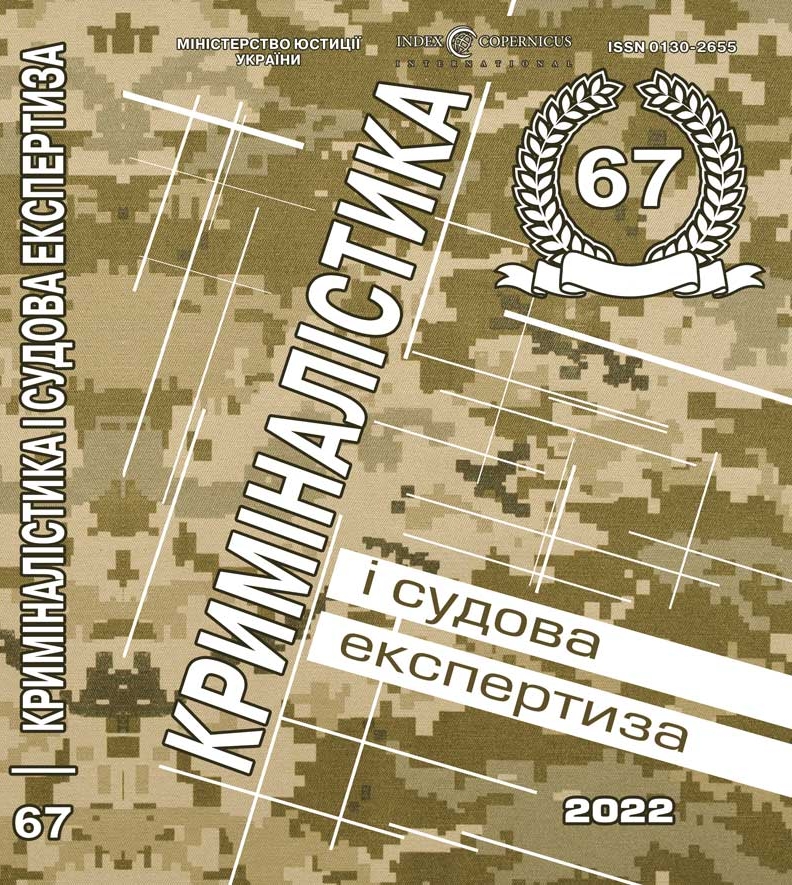DOI: https://doi.org/10.33994/kndise.2022.67.64
V. Fedorenko, V. Kovalenko, T. M. Chabanets
The article is devoted to the problems of theory and practice of expert investigation of the image or imitation of a trademark of the State Flag of Ukraine and other state flags within the forensic-expert specialty 13.6 – ”Investigations related to commercial (trade) names, trademarks (marks for goods and services), and geographical indications”.
Flags, as well as similar banners, banners, bugles, standards, gonfalons, pennants, etc. emerged in the history of Western Europe along with the formation of monarchies and the first European states. Their emergence relates to the origin of coats of arms and heraldry. However, heraldry does not cover issues of color, figures, size, proportions, and texture of flags. These issues are the subject of vexillology (from Latin vexillum – “flag” and from Greek λογοs – “science”) as the “science of flags”, which emerges much later than heraldry, in the 1950s and continues to take shape until today.
The flags of monarchs, orders, states, and nations have been preserved in textured form in museums, temples and treasuries of Europe no later than the 16th century. At the same time, science and art know numerous images of flags. The drawback of these depictions of flags is their inaccuracy in conveying the colors, figures and proportions of the flag cloth used. In addition, each of the modern state flags of the countries of the world has its own history of origin, development, and semiotic meaning. It is not uncommon for state flags with a rich history, such as the flag of Portugal, contrary to the rules of heraldry in terms of combination of colors.
The State Flag of Ukraine has a rich ancient history, which has its roots in the times of the Kingdom of Galicia-Volynian, when the colors of the coat of arms –Golden Lion on a blue field – began to be used on the banners. The Ukrainian flag received its further development during the Ukrainian Cossacks time, and in 1918 the Central Rada adopted the “Law on the State Flag of the UNR” and it was revived in 1990-1992 in independent Ukraine.
The military aggression of Russia against Ukraine in 2022 and the huge support of Ukraine abroad contributed to the popularity of the State Flag of Ukraine all over the world. In this regard, there is a temptation to image or imitate the trademark of the State Flag of Ukraine. Similar cases used to take place with the state flags of foreign states.
The features of the expert study of the question “Is the trademark XXX image or imitation of the State Flag of Ukraine?” are revealed in the forensic specialty 13.6 – “Research related to the commercial (trade) names, trademarks (marks for goods and services), geographical indications”.
Key words: state symbol; flag; state flag; State Flag of Ukraine, forensic examination of intellectual property objects: trademark; expert examination of trademark; imitation.

